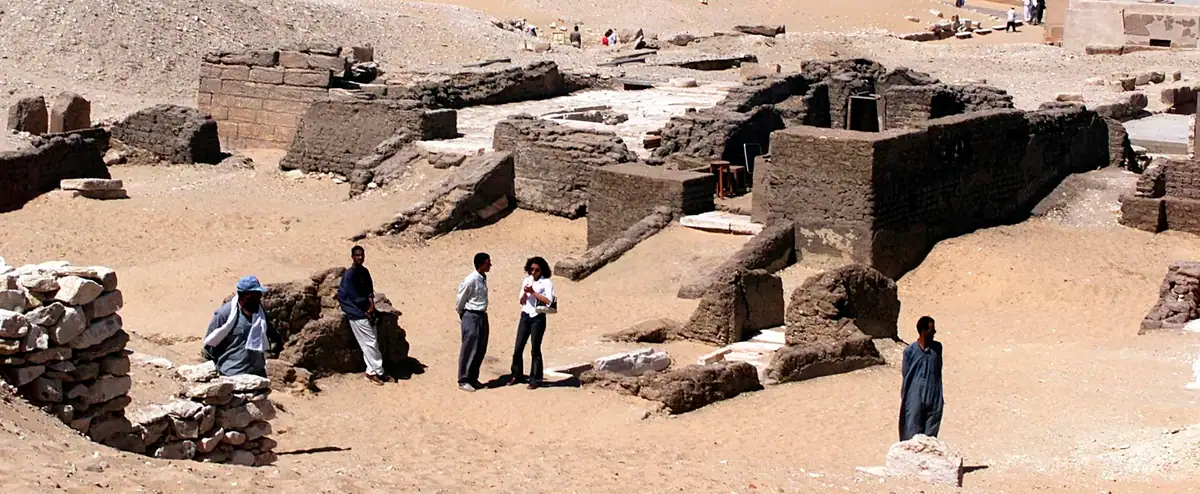Five pharaonic tombs “in good condition and erected for high officials” were unveiled on Saturday in Egypt at Saqqara, in the necropolis of Memphis, the capital of the Old Kingdom of the pharaohs.
• Read also: Unprecedented parade of 22 royal mummies in Egypt
• Read also: Discovery in Egypt of what would be “the oldest” brewery in the world
• Read also: Nile crocodiles, pets of the Nubians of Aswan
The site of Saqqara, just over fifteen kilometers south of the famous pyramids of the Giza Plateau, is a UNESCO World Heritage Site and is known for the famous step pyramid of Pharaoh Djoser, the first of the era pharaonic.
This monument, built around 2700 BC, by the architect Imhotep, is considered one of the oldest on the surface of the globe.
The five tombstones were discovered by Egyptian archaeologists northeast of the pyramid of King Merenre I who ruled Egypt around 2270 BC.
According to the Egyptian Ministry of Tourism and Antiquities, the tombs contained the remains of senior officials.
In the vault of one of them, named Iry, the excavations brought to light a sarcophagus in limestone and colorful decorations represent funerary scenes, including “tables of offerings, the seven oils and the facade of a palace,” he said in a statement.
Three other tombs, six meters deep, belong to two women, one of whom was “solely responsible for the king’s beautification”, and to the priest Pepi Nefhany.
And the last, dedicated to “Henu, steward of the royal house”, sinks, it, seven meters deep, from the same source.
Already in January 2021, Egypt unveiled new archaeological “treasures” in the Saqqara necropolis, including around 50 New Kingdom sarcophagi more than 3,000 years old, claiming that they “rewrite history”. of this period.
The Egyptian authorities hope to inaugurate the “Great Egyptian Museum” near the Giza plateau in the coming months and are counting on these new discoveries to revive tourism, hit hard by the Covid-19.
This sector, which employs two million people and generates more than 10% of GDP, has been at half mast since the Arab Spring in 2011.
